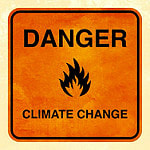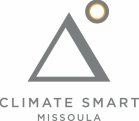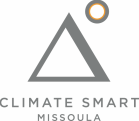 Yes, we know - but how do we respond? Yes, we know - but how do we respond? A couple weeks ago, New York Magazine published a detailed and downright terrifying account of worst-case projected climate impacts that represent the upper limit of current scientific models. The article stirred up a social media firestorm and quickly spawned a range of reactions from climate scientists, journalists, and academics. Interestingly, most critiques were aimed at the tone and framing of the article rather than its accuracy. Some argued that this apocalyptic, doomsday narrative was so depressing it would never motivate people to action; others suggested that this kind of alarmism is precisely what we need to shock us into urgent response to the climate crisis. So which is it? How can we contemplate and understand the real risks that climate change poses, without being paralyzed or overwhelmed by anxiety? Is fear useful? I found myself pondering these questions all last week. Meanwhile, on Friday night I watched “Inside Out”, the recent animated film about the emotional journey of a young girl, Riley, from childhood into early adolescence, told from the point of view of her emotions themselves: Anger, Fear, Disgust, Sadness, and Joy. If you haven’t seen it, do! It’s one of those kid movies that’s definitely not just for kids. As I watched, I was impressed by the subtle genius of the story and how it illustrates the complexities of our human responses to the world around us. In “Inside Out”, all the emotions play their own important roles at different times. In the end, Sadness and Joy end up working together to motivate Riley’s reconnection with her family. The more I thought about it, the more I realized these messages might offer some wisdom to those of us wrestling with how to respond to climate science and solutions. Skeptical that a cartoon can help? Fair enough - just indulge me for a moment here. In the movie, the stress and shock of a cross-country move jolts Sadness and Joy out of Riley’s “control room”, leaving Disgust, Fear, and Anger, haplessly at the helm. With only this limited range of emotions, Riley lashes out at her parents, withdraws into herself, and even tries to run away. If you read that New York Magazine article, maybe this kind of response sounds familiar. Disgust at the damage we have done to our planet, fear of harm to myself and loved ones, anger that we are not acting fast enough to prevent these extreme outcomes - these were certainly the first emotions I felt. Maybe it’s no surprise that critics accused author David Wallace-Wells of exaggeration, fear-mongering, or despairing. When we’re presented with shocking information, it’s natural to try to find a way to discount it or run away from it.
Sadness and joy are two sides of the same coin: our love for the world and our delight in its wonders is what makes us sad to see it changing! Not to get too sappy, but I believe that acknowledging and giving space for both deep sadness and joy can truly motivate us to action. It can help us harness all our emotions, to see solutions more clearly, and to work together to protect each other and the world we love.
One last thing - some critics of the article said, “Where’s the hope?” It's true - let’s not forget that the reason why this doomsday scenario is unlikely to play out is that people across the globe are putting creative climate solutions into action, through individual and collective efforts. We’ve been reading some interesting articles on this topic too - stay tuned for another blog soon. In the end, of all the responses to the original NY Magazine article, journalist David Roberts’ cool-headed analysis seems pretty spot on to me - check it out if you haven’t. The gist: some fear is ok. It’s important to be informed by the latest climate science and models, but it’s worth remembering that we’re only human, and our emotions are real and valid. When we let our emotions do their jobs, we can move forward and find solutions - and hope - together. -Abby
0 Comments
 Has all this 90-degree-plus weather made you a little cranky lately? A little quicker to anger? Maybe you worry about your crops, or the fish in your favorite stream, if we face another drought. Personally, I can get sucked into feelings of hopelessness just thinking about the monumental tasks of reducing our carbon footprint and creating a more sustainable society. Since I finished researching and writing our new Climate and Mental Health page (which you should really check out!), I’ve been thinking a lot about how climate change affects our state of mind. Did you know that extreme heat, increased wildfire smoke, drought, and even the threat of climate change itself can all be major stressors? That the repercussions of extreme weather events and the alteration of our most cherished landscapes can lead to anxiety, chronic stress, depression, substance abuse, increased levels of domestic violence, and even suicide? Heat and wildfire smoke actually affect brain chemistry, with the former increasing stress hormones and the latter causing brain inflammation. Luckily for my own emotional well-being, I’ve also been learning how we can use the challenges we face in positive ways. Climate change can be a catalyst for improvements in the mental and emotional health of our entire community, including the well-being of Missoulians who are most at risk. Heat and wildfire smoke take a much larger toll on homebound senior citizens, on those who live in substandard housing or are homeless, on those who live in neighborhoods with few trees, and on refugees who have been forced to flee their homes due to drought, sea level rise, or other changes. People with existing mental health problems and other disabilities are at greater risk, too.
The time to start is now. Because if you think the weather is uncomfortable this week, consider this: if current carbon emissions trends continue, by 2100 summers in Missoula will resemble summers in Yucaipa, California – a city near the Mexican border where the average summer temperature is currently 92 degrees. Missoula’s average summer temps hover around 80 degrees, but that’s quickly changing. (You can see the future summertime trajectories of 1,001 U.S. cities, all based on the latest climate science, on this neat interactive map.)  Improving the mental and emotional health of all Missoulians is a worthy goal. So is reducing our carbon footprint so we don’t become as hot and dry as southern California. Isn’t it great that the twin ideals of better health and a more sustainable, equitable Missoula go hand in hand? I’m starting to feel a little less cranky already. What about you? How are our changing summers affecting your emotional health? Are you a health professional who's seeing impacts on your patients? What concerns you most about climate change and mental health? Let's keep the conversation going! Comment on this post, or send your thoughts and experiences to [email protected]. I'd love to share a wider range of views in an upcoming blog post. (If you missed the link at the top, don’t forget to check out our new Climate and Mental Health page for more information on what you can do to make Missoula a healthier and more resilient place. You can also check out our overall strategies for a Healthy Community.) Terri Nichols is a graduate student in the University of Montana's Environmental Studies program. She's working as Climate Smart Missoula's Summer Smart Intern this year thanks to a Brainerd Conservation Fellowship. |
AuthorsAbby Huseth Archives
July 2024
Categories
All
|



 RSS Feed
RSS Feed


